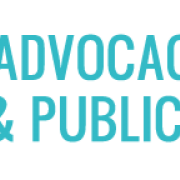You are looking at an archived version of our site. Please visit thepcc.org for a fresh, new experience!
Payment Reform
Various payment innovations have been testing ways to support primary care innovation and PCMH for many years. Depending on the region and the provider arrangement (e.g., a solo or small practice, an Independent Practice Association or Accountable Care Organization (ACO), or an employed provider as part of a health system), some practices that were once paid fee-for-service only, are now receiving additional per member per month payments (PMPM). Others are receiving payment incentives tied to performance metrics that measure quality, cost, or patient engagement. Medicare has been piloting various types of payment reform — ranging from pay-for-reporting to bundled payment — but the scale and spread of delivery models that tie payment to quality for all Medicare benefi ciaries is more recent.
As part of the Affordable Care Act, the Centers for Medicare and Medicaid Innovation (CMMI) is spearheading one of the most aggressive efforts in recent history to address delivery system reform. Recent passage of MACRA can help bring these efforts to scale across the entire Medicare program, and subsequently impact the broader commercial marketplace.
Payment Reform & PCMH: Value-based Purchasing in the Public and Private Sector
Because fee-for-service does not reimburse for key PCMH features — such as facilitating information sharing and care coordination with sub-specialists and hospitals, managing web-portals and personal health records, email communication and telephone visits, developing connections to community-based organizations, and integrating behavioral health — it often fails to compensate for the complete scope of services offered by a PCMH. Smaller practices with little reserve capacity are especially challenged in offering PCMH-level care without adequate financial support.
Numerous alternative payment models (APMs) are poised to support PCMH implementation and sustainability. Significant experimentation and testing of alternative payment arrangements is well underway, ranging from accountable care, to episode-based payment initiatives, to up-front payments that support primary care practice transformation, to initiatives that focus on specific populations, such as Medicaid, CHIP, or individuals dually eligible for Medicaid and Medicare.
For more information, please access our 2014-2015 PCMH evidence report.
News
June 28, 2016 | PCPCC Press Release
- ‹ previous
- 25 of 69
- next ›
Events & Media
April 17, 2014 | PCPCC, NASHP
April 11, 2014 | The Brookings Institution
March 4, 2014 | National Academy for State Health Policy
- ‹ previous
- 25 of 34
- next ›
Related Content
| Title | Source | Date |
|---|---|---|
| Report: Fee for service still dominant method of healthcare payments | MedCity News | September 30, 2014 |
| A Health Care Success Story | New York Times | September 23, 2014 |
| Partnership promotes new model of health care | Greenville Online | September 15, 2014 |
| Are Primary Care Providers the Cool Kids Now? Dr. Marci Nielsen Thinks So | MedTech Boston | September 11, 2014 |
| Medicare Spending Is Slowing: $9 Billion Windfall for Taxpayers | The Motley Fool | September 7, 2014 |
| What Payment Reform Means for the Frontline Health Care Workforce | Brookings | August 5, 2014 |
| Patient-Centered Medical Homes Reduce Costs | Center for Advancing Health | August 1, 2014 |
| The Beginner's Guide to New Health Care Payment Models | Brookings | July 23, 2014 |
| Shifting Motivations: Rethinking Primary Care Physician Incentives In Health IT Implementation | Health Affairs Blog | July 21, 2014 |
| Take value-based care beyond just financial rewards | FierceHealthPayer | July 16, 2014 |
Pages
Secondary menu
Copyright © 2024 Primary Care Collaborative




